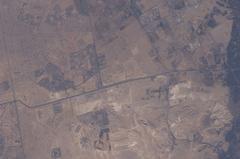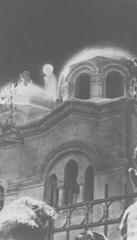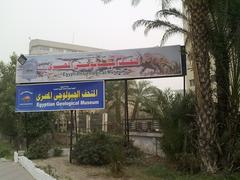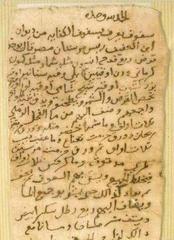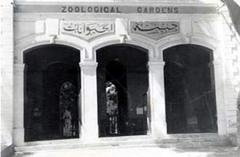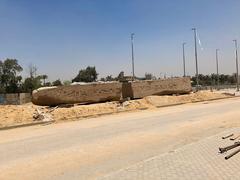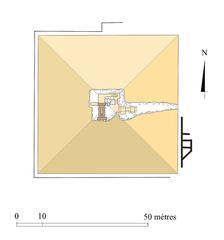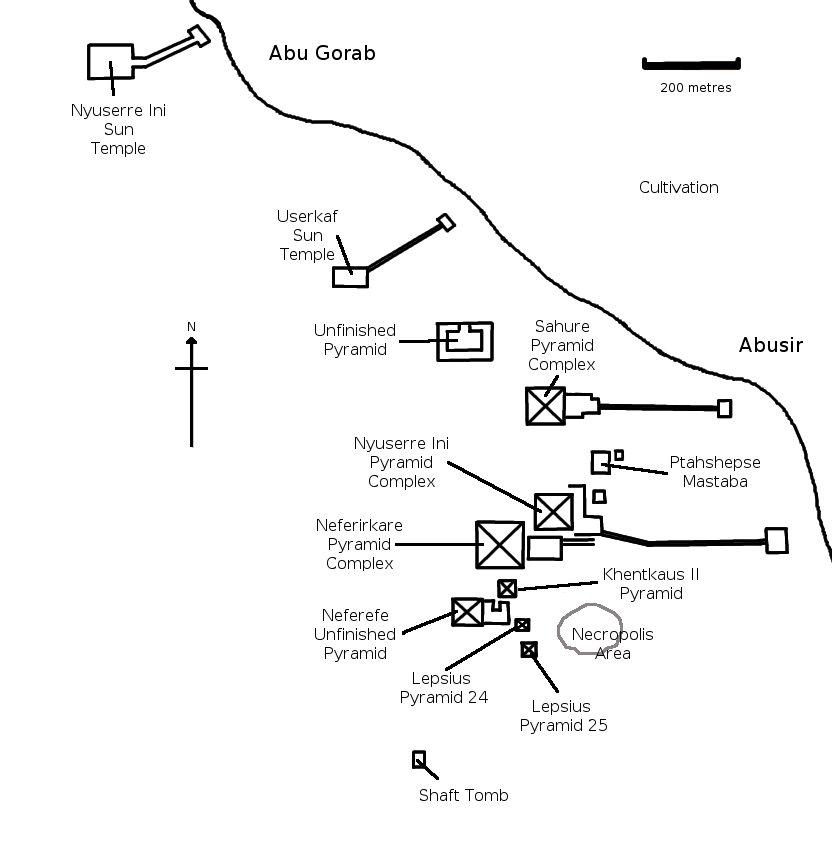
Abu Gorab Visiting Hours, Tickets, and Historical Significance in Giza Governorate, Egypt
Date: 14/06/2025
Introduction
Abu Gorab, located on the west bank of the Nile between Giza and Abusir, stands as one of Egypt’s most remarkable yet lesser-known archaeological treasures. Renowned for its sun temples dating to the Fifth Dynasty (circa 2465–2323 BCE), Abu Gorab offers a unique insight into the evolution of solar worship, the religious ideology of ancient Egypt, and the architectural ingenuity of the Old Kingdom. Unlike the iconic pyramids, which served as royal tombs, the sun temples at Abu Gorab were open-air sanctuaries dedicated to Ra, the solar deity, and played a pivotal role in both religious and political life of the era (Hespress; Ancient Origins).
Recent archaeological work—including the discovery of a previously unknown sun temple beneath the temple of Nyuserre Ini—has shed new light on the site’s historical significance and architectural development. With its close proximity to the Giza and Saqqara necropolises, Abu Gorab is an essential stop for those seeking a deeper understanding of Egypt’s ancient heritage. This guide provides comprehensive information on Abu Gorab’s history, cultural importance, practical visitor details, and travel tips to help you plan a rewarding visit.
Table of Contents
- Origins and Construction of Abu Gorab
- Visitor Information: Tickets, Hours, and Tips
- On-Site Experience and Key Features
- Safety, Etiquette, and Responsible Tourism
- Best Time to Visit and Packing List
- Frequently Asked Questions (FAQ)
- Visual Aids
- Conclusion and Call to Action
- Further Resources
Origins and Construction of Abu Gorab
Abu Gorab is celebrated as the location of several sun temples constructed during the Fifth Dynasty, a period that witnessed the height of solar worship in ancient Egypt. Pharaohs such as Userkaf and Nyuserre Ini commissioned these monumental structures not only as sites of ritual but also as powerful statements of their divine authority as “sons of Ra.” Unlike pyramid complexes, the sun temples were designed as open sanctuaries, featuring expansive courtyards, altars for offerings, and central obelisks that symbolized the sun’s rays and the mythical benben stone (Hespress).
Historical Significance in the Fifth Dynasty
The Fifth Dynasty marked a significant shift in royal ideology, with the king’s legitimacy increasingly tied to the solar cult. The construction of sun temples at Abu Gorab and nearby Abusir signaled this change, positioning the pharaoh as the earthly representative of Ra. The temples functioned as both centers of worship and as political monuments, reinforcing the pharaoh’s connection to the divine (Hespress).
Archaeological Discoveries and Excavations
Systematic excavations at Abu Gorab have revealed significant remains, most notably the sun temple of Nyuserre Ini, known as Shesepibre (“Joy of the Heart of Ra”). The temple’s design featured a large obelisk, an altar, storerooms, and a processional causeway. Recent discoveries include the foundations of an even older sun temple beneath Nyuserre’s, constructed of mudbrick and limestone, providing rare evidence of the architectural evolution of sun temples across successive reigns (Hespress; Ancient Origins).
Cultural and Religious Context
The open-air design of Abu Gorab’s sun temples mirrored the Egyptians’ desire to connect directly with the sun god. Daily rituals included offerings and hymns, reinforcing the pharaoh’s role in sustaining ma’at (cosmic order). The temples also served as state propaganda, with large public ceremonies and processions affirming the king’s divine status (Ancient Origins).
Architectural Features and Innovations
Abu Gorab’s sun temples were innovative for their time, with central obelisks that prefigured New Kingdom monuments. The east-west orientation aligned with the sun’s path, and separate entrances and exits facilitated ceremonial processions. The use of limestone and quartzite for pillars and altars highlighted both craftsmanship and the symbolic importance of these elements (Landioustravel).
Decline and Legacy
By the end of the Fifth Dynasty, the construction of sun temples declined, possibly due to changing religious priorities or political shifts. Nonetheless, the architectural and ideological innovations at Abu Gorab influenced later developments in Egyptian temple construction and left an enduring legacy in the religious landscape (Hespress).
Visitor Information: Tickets, Hours, and Tips
Visiting Hours
Abu Gorab is not a standard tourist site and operates under restricted access due to ongoing archaeological work. Officially, the site is open from 8:00 AM to 4:00 PM, Sunday through Thursday, but general public access is limited and often requires a special permit or participation in an authorized guided tour (Wikipedia; Egypt Excursions Online).
Tickets and Entry
There is no standard on-site ticketing system. Access is typically restricted to archaeologists or those with official permits from the Ministry of Antiquities and Tourism. Visitors must arrange entry through licensed tour operators or apply for permits in advance. Group tours and multi-site itineraries often include Abu Gorab (Sailing Stone Travel).
Accessibility
The terrain is uneven and sandy; there are no paved paths or ramps. Accessibility for visitors with limited mobility is minimal. Comfortable, sturdy footwear is essential.
Guided Tours
Guided tours are recommended and often necessary, as guides can arrange permits and provide expert interpretation of the site’s history and symbolism (Osha Tours).
Nearby Attractions
Abu Gorab is situated near Abusir, Saqqara, and the Giza Plateau, making it feasible to combine visits to multiple historical sites in one trip (Trek Zone).
Practical Travel Tips
- Weather: Best visited between October and April to avoid extreme heat.
- Essentials: Bring water, sun protection, and snacks; there are no facilities on site.
- Attire: Dress modestly and wear sun-protective clothing.
- Photography: Permitted for personal use, but drone and professional equipment require advance authorization (The Discoveries Of).
On-Site Experience and Key Features
The Sun Temple of Nyuserre Ini
This is the best-preserved Fifth Dynasty sun temple, featuring a massive obelisk base, a rectangular enclosure, and an alabaster altar shaped as the Hotep sign. Intricate carvings, ritual basins, and the remains of a ceremonial causeway are highlights (Sailing Stone Travel; Ancient Code).
Archaeological Finds
Fragments of decorated limestone, granite, alabaster, and quartzite bear witness to the temple’s grandeur. A mudbrick model of a solar boat suggests ceremonial functions and links to funerary practices (Sailing Stone Travel).
Early Dynastic Cemetery
To the north lies a burial ground dating to Egypt’s First Dynasty, offering further insight into non-royal funerary customs (Wikipedia).
Safety, Etiquette, and Responsible Tourism
- Respect the Site: Do not climb or remove artifacts.
- Guided Visits: Always comply with your guide’s instructions.
- Permits: Ensure all permissions are secured in advance.
- Dress Code: Modest clothing is expected; cover shoulders and knees.
- Tipping: Tipping guides and drivers (baksheesh) is customary.
Best Time to Visit and Packing List
- When to Go: October to April for cooler weather.
- Packing List: Passport, cash, sunhat, sunglasses, sunscreen, water, snacks, closed-toe shoes, camera, and a basic first-aid kit (Salt in Our Hair; Lonely Planet).
Frequently Asked Questions (FAQ)
Q: What are the visiting hours for Abu Gorab?
A: Officially 8:00 AM to 4:00 PM, Sunday–Thursday; access is restricted and often requires advance arrangements.
Q: Are tickets required?
A: Yes, but permits or tour arrangements are necessary; no standard ticket sales on site.
Q: Is the site accessible to people with disabilities?
A: Accessibility is very limited due to uneven terrain.
Q: Can I take photographs?
A: Personal photos are allowed; professional equipment and drones need prior approval.
Q: How do I reach Abu Gorab?
A: By private car or taxi from Cairo, or as part of an organized tour. Public transport is not recommended.
Visual Aids
Alt text: A view of the solar temple ruins at Abu Gorab, showcasing ancient stone reliefs under blue sky.
Alt text: Map highlighting Abu Gorab in relation to Saqqara, Abusir, and Giza Plateau.
For interactive maps and more images, visit Egypt’s Ministry of Antiquities.
Conclusion
Abu Gorab is a testament to Egypt’s Old Kingdom religious innovation and the enduring significance of solar worship. Its sun temples, especially the well-preserved temple of Nyuserre Ini and the recently discovered earlier structure, offer a window into the relationship between the pharaohs and the sun god Ra. While access is limited due to ongoing archaeological work, careful planning and participation in guided tours will reward visitors with an intimate and enlightening experience, away from Egypt’s more crowded sites. Responsible tourism and adherence to site regulations are essential to preserving this unique heritage for generations to come.
Call to Action
Ready to delve deeper into Egypt’s fascinating history? Download the Audiala app for expert travel guides, offline maps, and the latest information on Egypt’s historical sites. Follow us for updates, tips, and inspiration for your next adventure.
Further Reading and Official Resources
- Lost Egyptian Sun Temple Unearthed in One of the Most Important Discoveries of the Last 5 Decades – Hespress
- Long-Lost Egyptian Sun Temple Found After 4500 Years – Ancient Origins
- Visiting Abu Gorab Sun Temples: Hours, Tickets, and Archaeological Wonders – Landioustravel
- Abu Gorab – Wikipedia
- Abu Gorab Nyuserre Sun Temple – Sailing Stone Travel
- The Way of the Gods – The Stargate of Abu Gurab – Ancient Code
- Sun Temples of Abu Ghurab – Egypt Excursions Online
- Abu Gorab Cairo Guide – Trek Zone
- Egypt Travel Tips – Salt in Our Hair
- Things to Know Before Traveling to Egypt – Lonely Planet
- Egyptian Ministry of Tourism and Antiquities


